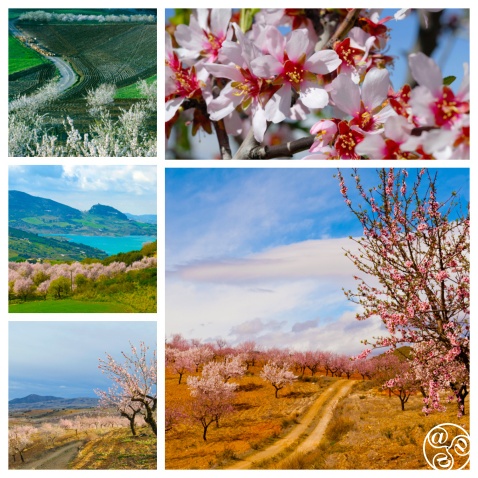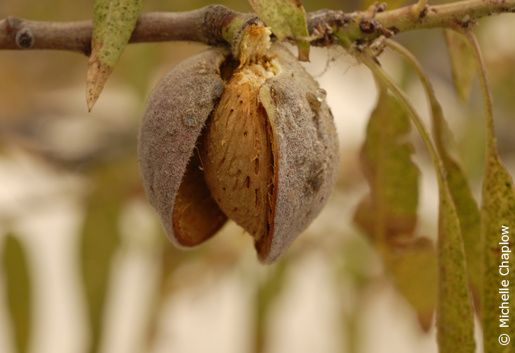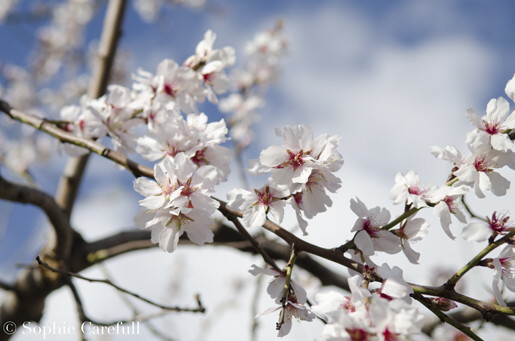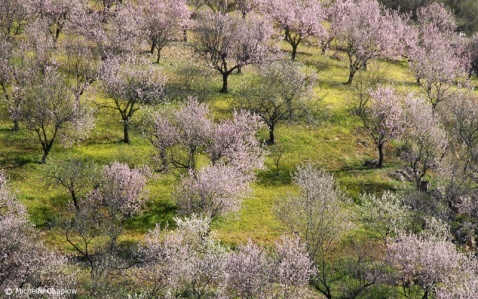
Impressive almond landscapes in Andalucia © Michelle Chaplow |
|
Almond Trees in Andalucia
Almond trees were domesticated as far back as 3,000 BC and have been part of Mediterranean culture for millennia. Approximately 1.7 million tons of almonds are produced every year around the world. Spain is the second-largest almond producer in the world (13% of annual production) after the United States (over 40% annually) and relies on Andalucia and Valencia as its main producing regions.
Almond trees add a special charm to the landscapes of Andalucia. Their willowy, wispy branches and delicate flowers grace hillsides and craggy cliffside areas with an elegant beauty. The colours and scents of their blossoms bring the springtime countryside to life. It’s an amazing experience to drive through large expanses of land cultivated with almond trees, but even more delicious is to walk through the groves. The largest concentrations of almond trees can be found in La Axarquia in Malaga province, around villages such as Sedella and Archez. You will also find plenty of trees in Guaro, which is located about 22km inland from Marbella.
If you travel across southern Spain while the almond trees are in full bloom, which is usually from late January until about mid-February, you’ll probably notice that some are white and others are pink. The white blossoms produce sweet almonds while the pink ones produce the bitter variety. The latter contain cyanide which must be removed before consuming the extract of these nuts.
 |
| In July and August the shell begins to split, allowing the almond to dry. |
Should you be lucky enough to own an estate full of almond trees, you might be interested to know that you can graft the following shoots into your trees: other varieties of almonds, peaches, plums, nectarines and apricots. Of course, you can also give this a try with a single tree growing in a pot on your terrace! For more suggestions on where to see Almond trees in Andalucia, click here
 |
| The beautiful almond blossom of the Axarquia region. |
